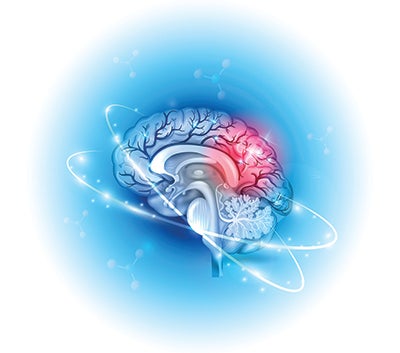Concussion Prevention
Almost half a million kids are treated in an emergency department each year for traumatic brain injury and/or concussion (alone or along with other injuries or conditions).
What is a concussion?
A concussion is a type of traumatic brain injury (TBI) caused by a hit to the head or body that causes the head and brain to move rapidly back and forth.
The rapid movement causes brain cells to change shape or experience changes that make it harder for brain cells to function and communicate.
How do concussions appear in people?
Concussions can be difficult to recognize because symptoms may vary from person to person.
Symptoms usually appear right after injury, but in some people, it may be hours to days before symptoms are obvious.
Typically, most symptoms go away by themselves within 10 days.
Concussions are usually not life-threatening but can still be serious and need medical attention.
How do we evaluate concussions?
Initial evaluation of a concussion may involve ruling out serious causes of symptoms, such as a cervical spine injury and a severe TBI with imaging, such as a computed tomography (CT) scan. Concussions can be evaluated based on symptoms checklist and neurological testing.
 Recovery and treatment of concussions
Recovery and treatment of concussions
- REST: Take it easy the first few days after injury when symptoms are most severe. This includes minimizing physical activity and getting a good night’s sleep.
- As symptoms get better, GRADUALLY return to non-strenuous activities like school.
- When symptoms are completely gone, you can return to all of your normal activities. Most people will feel better within a few weeks. Some people may have a longer recovery period.
For people who find that symptoms persist longer than a few weeks, a referral for neuropsychological testing may be indicated to further refine your treatment plan. For people at risk of a longer recovery period, neuropsychological testing and referral to a health professional should be considered.
How to prevent concussions
- Always wear seatbelts in the car and buckle children in safety seats.
- Install safety gates on stairs to protect young children.
- Put grab bars in the bathroom, with nonslip mats in the tub and on floors to prevent falls.
- Wear a helmet when riding a bicycle or motorcycle and playing some sports.
What to do if you think someone has a brain injury
- ASSESS the situation.
- BE ALERT for brain injury signs and symptoms.
- CONTACT a health care professional — If you are unsure if you or someone you know is experiencing a concussion, call your doctor and seek medical attention.

Wearing a helmet can protect athletes from serious brain or head injuries.
When appropriate, make sure athletes use the correct helmet for their activity.
Some resources for you to explore:
- CDC HEADS UP! app and resources
- BikeSafe NC
- Brain Injury Association of North Carolina
- WakeMed Concussion Program For appointments: 919-350-1146
Information adapted from the Centers for Disease Control and Prevention (CDC), American Academy of Pediatrics and American Journal of Sports Medicine.
Concussion Signs & Symptoms
Physical
- Headache
- Blurry vision
- Dizziness/Poor balance
- Light sensitivity
- Auditory sensitivity
Thinking
- Difficulty concentrating
- Confusion
- Difficulty remembering
- Feeling foggy
- Loss of consciousness
Sleep
- Sleeping more
- Sleeping less
- Trouble staying or falling asleep
- Fatigue
Mood/Emotions
- Nervousness/anxiety
- Irritability
- Depression
- Sadness